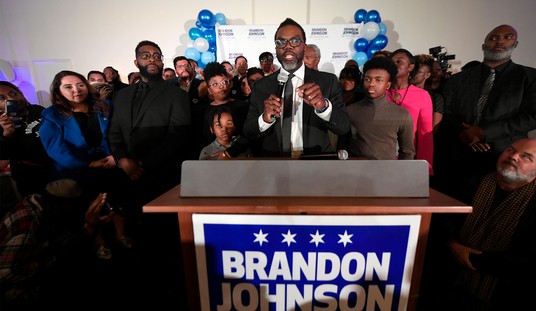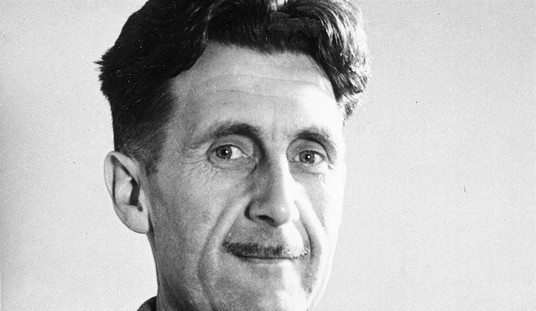Can Donald Trump find the key to unlock the Keystone State? To win the White House, supporters and detractors of Trump both agree, the presumptive Republican nominee will have to redraw the Electoral College map. Trump has embraced a more protectionist policy on trade than either Republicans and Democrats have for decades in an attempt to woo despairing working-class voters back to the ballot box. Ground Zero for that strategy seems to be Pennsylvania, and it may well have its intended effect, Salena Zito reports for the Pittsburgh Tribune-Review:
Western Pennsylvania has been the driving force in the state becoming more Republican said Henry Olsen, a Senior Fellow at the Ethics and Public Policy Center. Olsen said voting patterns of former union Democrats displaced by trade deals and environmental regulations that impacted the coal industry contributed to the rightward push.
“If you look at the coal county of Greene, the person who is not looking closely says, ‘Oh well, Romney carried it by huge margins, so how can that make a difference for Trump?’ Well he did, except potential turnout was down by 10 percentage points,” Olson said.
“If Trump gets that 10 percent back, that is only 1,500 to 2,000 votes in a small county like Greene, but then you get an extra 10 percent in Washington, Cambria, Indiana, Somerset counties, which have larger populations,” he said of neighboring counties with similar voting patterns.
“Then, all of a sudden, you are talking about an extra 200,000 votes; you have to look at turnout and margin as much as who carries it,” he said.
It’s not just the western part of the state where the hard line on trade will resonate, either:
“The same goes for the Philly collar county of Bucks,” Wasserman said, as well as the northeastern coal counties of Luzerne and Lackawanna, “where Trump won’t necessarily win, but could chip away at Clinton’s margins.”
The potential has Team Hillary worried, the Washington Post reports, especially in regard to the rank-and-file within the trade unions:
Of the many ways Trump, the GOP’s presumptive presidential nominee, has scrambled the 2016 campaign, it is his position on trade that has presented one of the most unexpected challenges for his rival, Hillary Clinton, the likely Democratic nominee. In an election season animated by economic anxiety, Trump, a New York business mogul, bucked Republican orthodoxy and powerful business interests such as the U.S. Chamber of Commerce in an appeal to blue-collar Republicans that helped propel him t o victory inthe GOP primaries.
Clinton, who scrambled to move left on trade during her tough primary fight against Sen. Bernie Sanders of Vermont, now finds herself again facing attacks on the issue — this time from Trump. He used his Pittsburgh-area speech to disparage her association with a pair of major trade agreements — one negotiated by President Bill Clinton’s administration and the other by President Obama’s while she served as secretary of state.
For Hillary Clinton, the risk is not necessarily losing support directly to Trump but rather not inspiring enough enthusiasm among rank-and-file union workers, whose turnout and ground-level organizing have traditionally been crucial for Democrats.
Clinton already has the endorsements of several of the nation’s largest labor organizations, including the AFL-CIO and the United Auto Workers, but faces the question of whether that organized support will be enough to hold the labor voting bloc together at a time when Trump has co-opted the traditional labor message about the perils of free trade and globalization.
Theoretically, it’s possible. However, there doesn’t seem to be much evidence so far that it’s working — not in Pennsylvania, and not in neighboring Ohio, where Republicans have a smaller hurdle to clear. Four polls since mid-May show Trump slightly trailing Hillary in Ohio, with one Quinnipiac poll showing a tie — at 40% each. A previous Quinnipiac poll in April showed Trump with a four-point lead, and a February poll had Trump up two, but Quinnipiac is the only pollster in the RCP aggregate to show Trump up in the state at all. At the moment, Hillary has a 2.5-point lead in the RCP average for the Buckeye State.
A very similar dynamic shows up in the aggregate polling for Pennsylvania. In fact, the RCP average is almost identical — 2.3 points for Hillary. The only poll to ever show Trump in the lead for this state came from Democratic pollster PPP, and that was in October. At the beginning of June, PPP had the two in a 44-all tie, but their latest poll now shows Hillary with a four-point lead.
Given that Trump has sounded the protectionist bell for almost a year, one would have expected to see a response by now in polling if this kind of response would be forthcoming. So far, it doesn’t appear to be materializing. It could be that pollsters are missing this eruption of populist-protectionist fervor, but they largely got it right in the Republican primaries, accurately heralding Trump’s domination.
Bear in mind that Pennsylvania wasn’t a narrow loss in 2012, either. Barack Obama beat Mitt Romney by five points and 310,000 votes, so it would either take 155,000+ votes to change parties, an additional 311,000 votes apart from the 2012 turnout, or a combination of both. That’s a lot of votes to flip, especially for a campaign that has until recently seemed very uninterested in the kind of ground campaign needed to make it happen. In comparison, the gap in Ohio is about half of that — three points and 166,000 votes. That kind of movement should be showing up in some polling if it’s going to happen, but it’s not coming up in any series at the moment.
That doesn’t mean it won’t happen, of course. It’s a long campaign, with lots of unknowns ahead of us. So far, though, there’s not much reason to conclude that Pennsylvania is in serious play — and without it, the path to 270 Electoral College votes looks theoretical rather than practical at the moment.
Salena Zito and I discussed this in more depth today on The Ed Morrissey Show, which started at 4 pm ET. Be sure to watch the saved podcast!








Join the conversation as a VIP Member